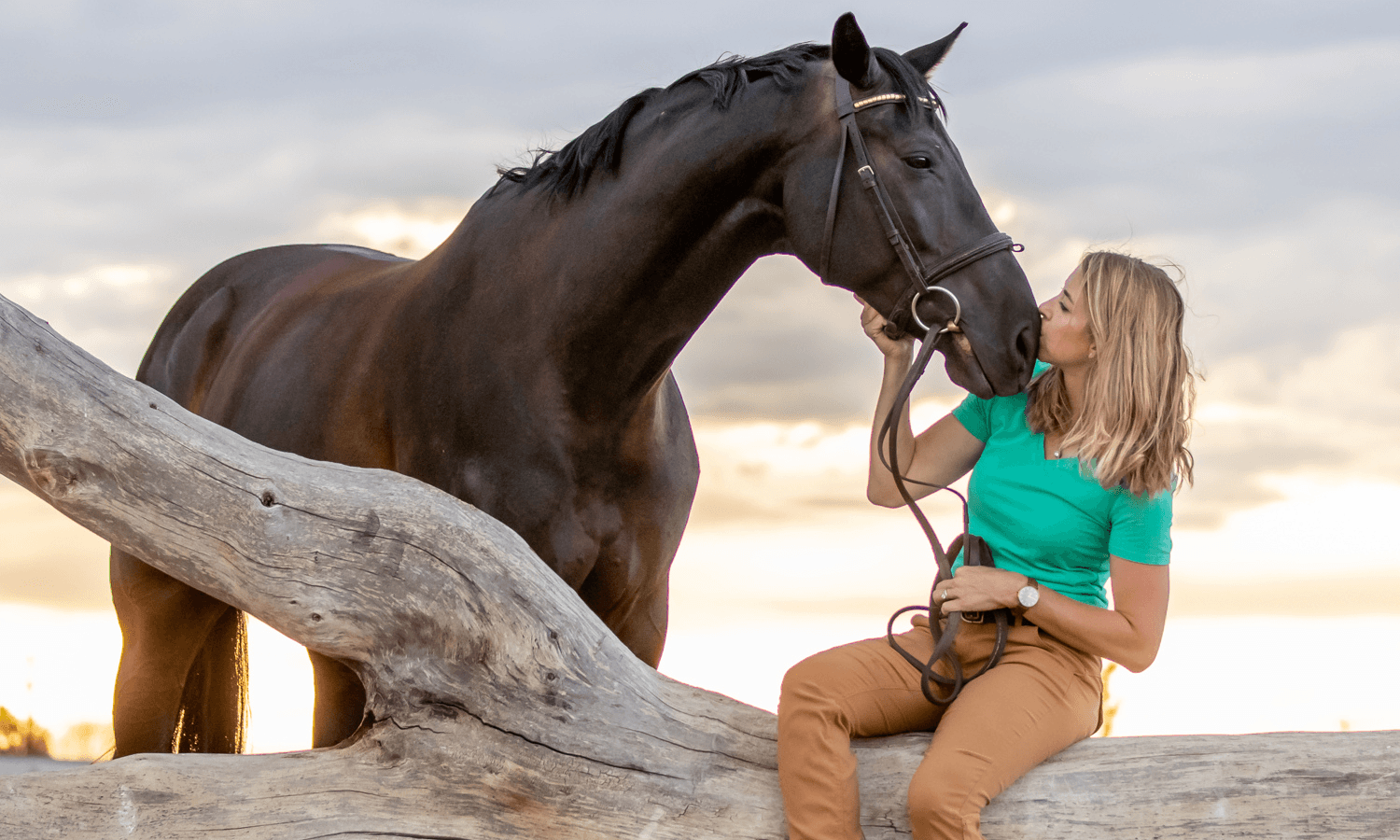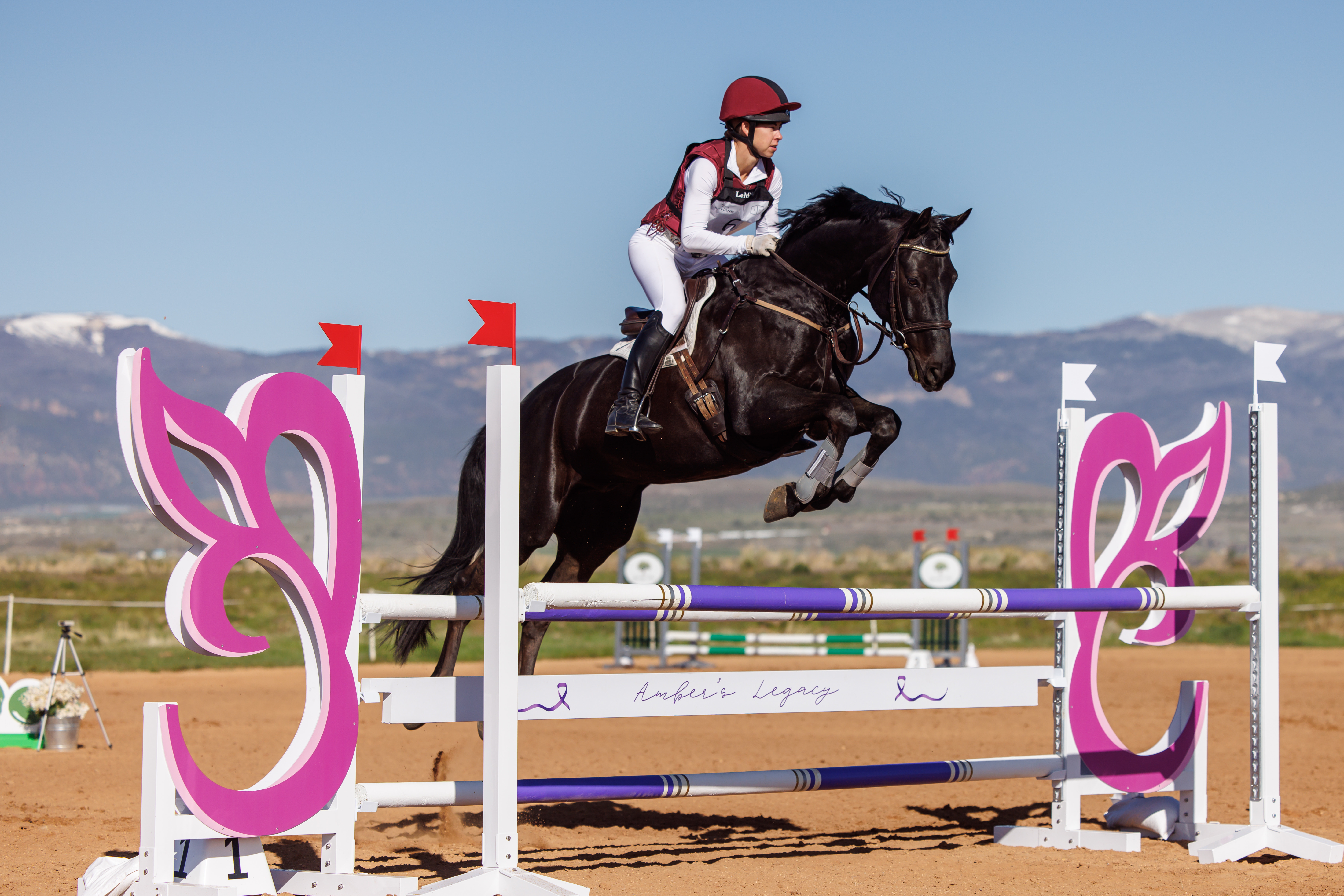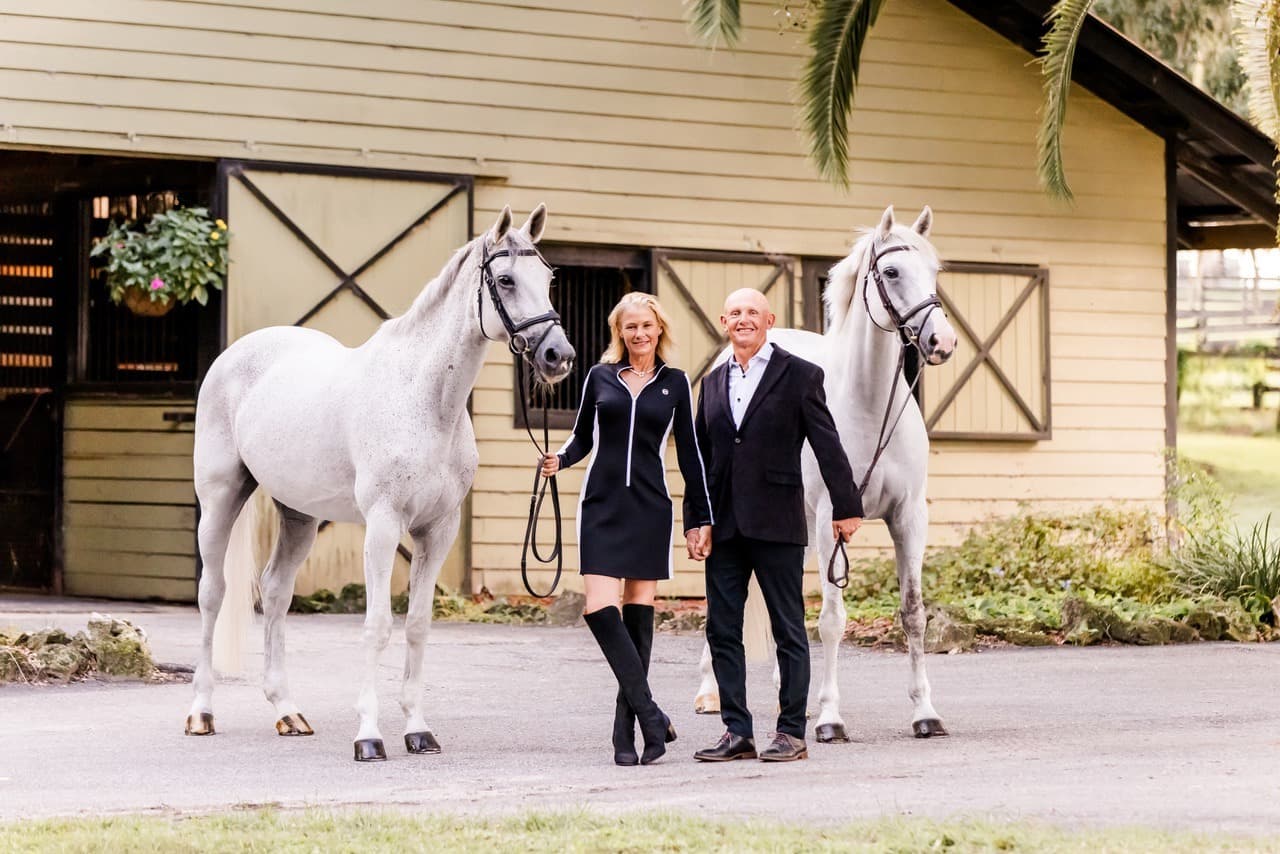Luck Leads Luedke to Larimar 15

Chelsea Luedke’s eventing journey leading up to this point has been the result of a lot of hard work and a little bit of luck on her side.
The equine veterinarian based in Thornton, Colorado, did not grow up in a horse-involved family. It was by happenstance that she would wind up at an eventing barn at the age of 13 and find her true passion.
“I knew nothing about eventing at that point,” said Luedke who had taken some lessons at a hunter/jumper barn previously, but was still relatively new to equestrian sports as a whole. “I got really involved in Pony Club, and I was really lucky, I had a horse at the time who was not meant to go above Training level, but I brought him up through the levels to the two-star and Young Rider’s Championships. It was kind of a once in a lifetime opportunity, being young and able to travel and meet great trainers and all of that. That was 20 years ago.”
Luedke knew early on that she wanted to be an equine veterinarian. Between going to school, getting her career off of the ground, and raising three kids, she had a few gaps in her competition record over the years and she hasn’t been back to the upper-levels of the sport since 2005.
And then she met Larimar 15. But don’t be fooled—this isn’t your typical love story.

A professional dressage rider and client of Luedke’s imported the then 4-year-old German Sport Horse gelding (Lahnstein x Abira) with the hopes of him being an upper-level dressage prospect.
“He came over and did fantastic for a year in the lower-levels, like Training and First Level,” Luedke noted. “But as they started stepping up his training in getting him prepared for the 6- and 7-year-old tests, his poor body fell apart.”
It all started with him bucking under saddle. Luedke worked alongside the client to develop an appropriate care plan which included muscle relaxers and stall rest, but his condition continued to spiral.
“The rider would put his leg on, and he just wouldn’t walk,” she continued. “He was making it very clear that he did not want to go under saddle. We ran a gamut of tests—he had gastroscopies, he had a bone scan, he had a muscle biopsy, it progressed at one point to a myelogram because he had been showing some signs of neck pain and possible compression, which he didn’t have.”
Ten months of diagnostics, and there were still no answers.
“At one point I went out between visits, maybe a month apart, and his whole hind end had jumped up maybe a half a hand, so he was really unlevel. So I told the owner, who is a good friend of mine, maybe we should just chuck him out, and let him grow. His pelvis was sore, his suspensories were sore; every part of his body was kind of falling apart, and mentally he just didn’t want to do it. Throughout the whole process, his owner was fantastic, but it was getting quite expensive and mentally exhausting. She was considering euthanizing him, but I had put it off until this point because he was otherwise healthy.”
Around the time they put him out to pasture, Luedke heard of a study going on at Colorado State University that piqued her interest.
“It was led by Dr. Mindy Story at CSU, who is fantastic, and she noted that there have been enough of these young warmbloods that come over for certain disciplines who are, for the first six to nine months, totally OK, and then they deteriorate. It falls into this 'poor performance' field, because it's not necessarily one issue, but what she had found to that date was that these horses would have normal diagnostics for the most part, but unfortunately in the terminal study they were finding some neck spinal nerve degeneration.”
At the time that Luedke was reviewing the study, several horses had displayed the same clinical signs as “Lars,” and in the post-mortem exam, the degeneration was found in the spinal nerves. Luedke approached her client with the possibility of enrolling the young gelding, and all parties agreed.
“He met all of the criteria for the terminal study, so we got him enrolled, but they weren’t ready to take him for two or three months,” reflected Luedke. “So we put him out in a big pasture in Colorado, and nobody really touched him. He had a couple bouts of weird neck pain and neuro issues, so the owner took him up to CSU that January and dropped him off to be part of this terminal study where he could at least teach all of us something and give his owner peace of mind.”
Luedke pulled some tail hair from the horse before his departure so that she could have a memory bracelet made for his owner. She figured that was that—until her phone rang.
“Dr. Story, who has seen this horse before, called me an hour later and said, ‘Chelsea, we can’t sleep at night if we put this horse down. He is clinically normal.’ So here the owner has left this horse that she loves and assumes that day that he is going to be put down, and I had to call her back and say, ‘This is what they found. Do you want to go pick him up?’ ”
Another colleague had mentioned that it may be worth taking him on as a personal horse for eventing. Luedke had never thought of that as a possibility, but she suddenly thought there might be another option for Lars.
“That is not something I ever think about with my patients,” stressed Luedke. “But I thought I could at least give her a backup plan when I called her if she didn’t want to pick him up and also didn’t want to put him down. So I told her that if she was beyond this, because I knew where she was emotionally, that I would pick him up and run more diagnostics on my own account and do everything that I could as a vet. We are friends, so I told her this could go one of two ways—he could still not do well, and I put him down in a matter of weeks, or he could do really well with time and a change in vocation.”
His owner agreed and transferred ownership over that day.
“There was three months of groundwork and rodeos, and there were people at my farm where I board who would not ride when I was riding, because there were lots of antics,” she shared. “He had to relearn that putting leg on meant go forward. We learned through the trainer at the farm, Michael Graham, that if you tried to focus on flatwork at all, which is how you would normally bring a young horse along, we would have exhausting battles just trying to get him to go forward. But if we just set up ground rails or cavaletti and put him in front of something to jump, which he had never jumped up until this point, he would go forward. If you ever got to a sticky point where he would plant his feet, you would just start jumping. Jumping was what made him happy.”

Thinking back to the way that the young horse had shot up butt-high in a month’s time, Luedke determined that the cause of the horse’s behavior most likely stemmed from a few things.
“I think probably 80% of it was growth, some of it is management. His muscle biopsy was showing some mild irregularities, not PSSM, but in that family of irregularities, and that issue does so much better with full turnout," she said. "So he has 24/7 turnout, no matter the weather. And he has a buddy out with him, and they play hard. I think what I realized was once we got him into a turnout situation with a proper herdmate, he changed completely. I think, personally, in combination with the growing pains, he just didn’t like being in a box all of the time, and he just didn’t like what he was doing. There are days where he still doesn’t want to do hard dressage, but he loves jumping, and I found out later that his breeding is all jumping lines. So it all makes sense—he is a fantastic jumper. I never had to train him how to jump; the horse knows how to adjust his body and jump well at every fence.”
After a few more months, Luedke felt she could reliably take him out of the arena and into the field for long hacks and a bit of an introduction to cross-country, and the horse thrived.
“His 8-year-old year is when I felt like he was finally done growing, and I could kind of put the pressure on him in terms of competition schedule and travel, but up until that point, I didn’t push him on anything. His back was changing until late 7, so he even got a couple of new saddles his late 7-year-old year when his withers sprung, and since then, he has been quite body capable, and we don’t get areas of soreness.”
Four-and-a-half years later, the pair are hoping to compete at the USEA American Eventing Championships presented by Nutrena Feeds in August and are preparing for a move-up to the Preliminary level at the end of the summer. Luedke is so grateful for the opportunity to have Lars in her life and to have the support of his former owner.
“She is still highly involved,” noted Luedke. “She’s come out to see him. I am so grateful that she is just so excited to see that he is doing so well. Every time I have checked in with her, she has always stated that she is just happy that he is alive. We have a very sweet connection with her.”
It hasn’t always been easy, but Luedke is thankful that luck has been on her side.
“The first two years were super emotional,” she reflected. “We were just doing tiny Starter horse trials, and I was just so happy that he was out and doing something that he liked. It goes back to just feeling lucky, because it easily could have gone the other way, I would have never been able to afford a horse of his caliber, but it was the right place and the right time. We put in the work, and he was able to thrive, and it all just feels like luck.”














